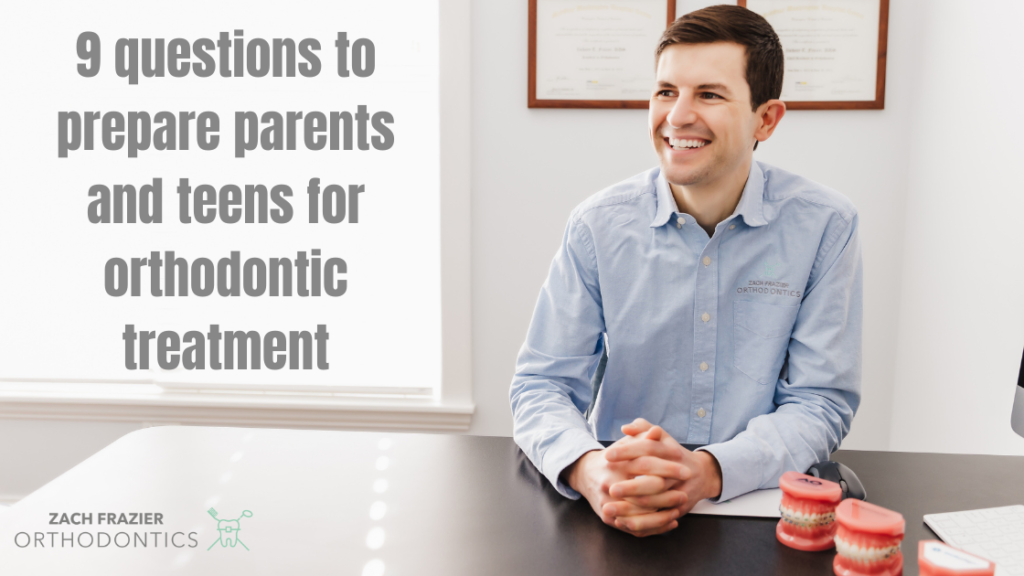
Is your teen ready to start orthodontic treatment this year? Preparing your adolescent child for orthodontic treatment can help them understand the responsibility and benefits of braces and Invisalign before you start the process. While their friends can tell them what to expect, treatment is individualized to their specific needs so no two journeys are exactly the same. With over 10 years experience as an orthodontist, here are 9 common questions we get from families coming for their first consultation:
Is my child ready for orthodontic treatment? Braces and clear aligners are usually considered when most of a child's adult teeth have grown in, usually around age 11-14. In some cases, braces are needed on younger children (age 7-10) if they have specific bites or complex issues. Every child is different, and we review x-rays and photos to determine if they are ready.
What are the different types of braces available? There are different types of braces, like metal braces, ceramic braces, and clear aligners. Metal braces are the most common and are made of stainless steel. Ceramic braces are less noticeable than metal braces and are made of tooth-colored materials like ceramic. Clear aligners (such as Invisalign) are made of plastic and are removable. You can learn about the differences between braces and Invisalign here.
How long will my child need to wear braces? The length of time your child will need to wear braces depends on their specific dental issues. While it varies person to person, most people wear braces for about 1-3 years, with average cases closer to 18-24 months.
What is the cost of orthodontic treatment? The cost of orthodontic treatment varies depending your child's needs, the appliances used, and length of treatment. It's a good idea to check with your insurance company to find out how much of the cost insurance covers. Our office can also help obtain that information for you at the complimentary consultation.
What can my child expect during the braces process? Getting braces put on doesn't hurt - no shots, no needles, no numbing - but your child may feel some discomfort or pressure for a few days afterward. They need to avoid certain foods that can damage the braces, and they'll need to brush their teeth more carefully to keep their braces clean. Rubber bands are used in most cases for bite correction.
Will my child have to have a gooey mold or dental impression taken? In our office, we use 3D digital scanners to take "digital molds" of their teeth. While some offices still take the old-school plaster impressions, we are in favor of the newest technology to ensure a comfortable experience for your child.
Are there any risks or complications associated with braces? While braces are generally safe, there can be some risks, such as tooth decay, gum disease, or damage to the braces if the braces are not cared for properly. We will talk to you and your child about how to prevent these problems for the best experience possible.
How can I help support my child during orthodontic treatment? You can help your child by encouraging them to follow their orthodontist's instructions and supporting good brushing and flossing habits at home. Additionally, it is important to encourage them that with good cooperation, they will have a better result and reduce their time in braces or clear aligners.
What happens after treatment is completed? After braces are removed or Invisalign is completed, your child will need to wear a retainer to help keep their teeth in their new position. We have options for retainers at the end of treatment, including bonded (fixed) retainers and removable retainers.
We hope this helps you prepare for an upcoming consultation. Still have something you'd like to ask before you commit? Feel free to send us a message here and we'd be happy to help answer your questions : )
Dr. Zach